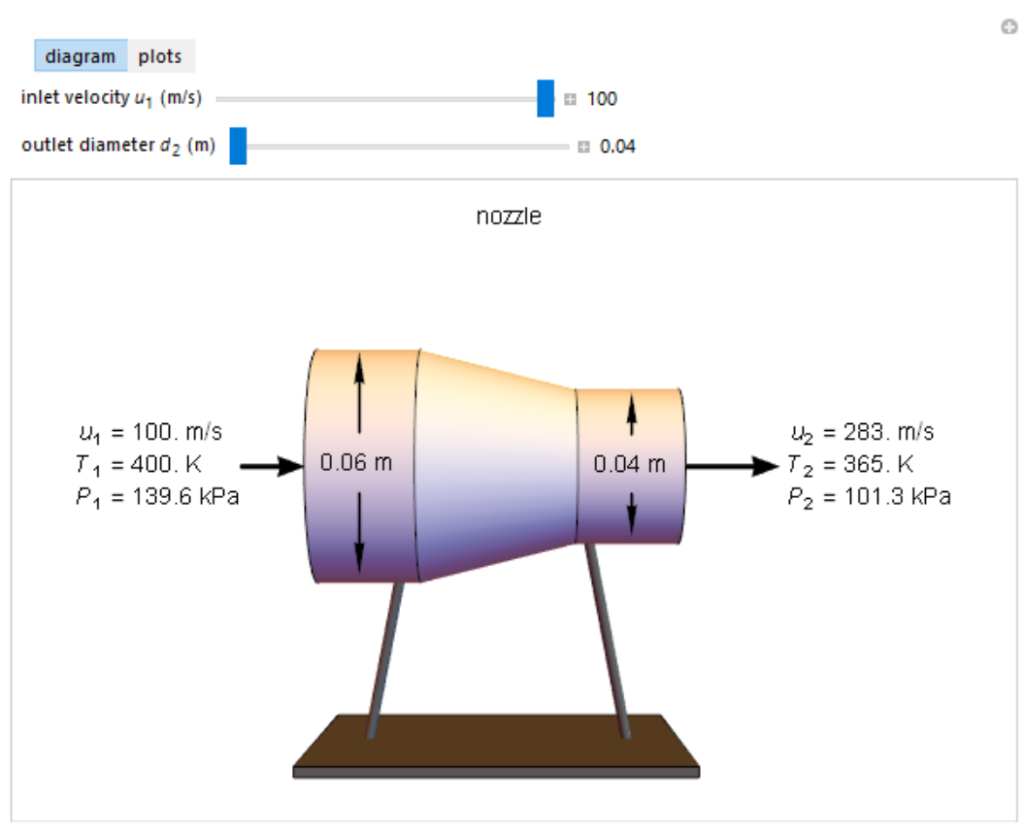Compressible Flow through a Nozzle/Diffuser


This simulation models compressible flow of air through a reversible nozzle/diffuser. The inlet pressure P1, the exit velocity u2, and the exit temperature T2 are calculated from mass and energy balances and that the entropy change is zero. The air exits as a free jet at atmospheric pressure (P2 = 101.3 kPa). Set the outlet diameter d2 and inlet velocity u1 with the sliders. When d2 < d1, the device acts as a nozzle, with the inlet pressure higher than the exit pressure (P1 > P2) in order to provide the energy needed to accelerate the air through the nozzle. When d2 > d1, the device operates as a diffuser, and the exit pressure is higher than the inlet pressure (P1 < P2). When “plots” is selected, the outlet velocity or outlet temperature is plotted as a function of outlet diameter for compressible air flow (blue) and incompressible air flow (green). Air is assumed to behave as an ideal gas and all flow is subsonic.
This simulation runs on desktop using the free Wolfram Player. Download the Wolfram Player here.
About:
This simulation was made at the University of Colorado Boulder, Department of Chemical and Biological Engineering. Author: Rachael L. Baumann
View the source code for this simulation


